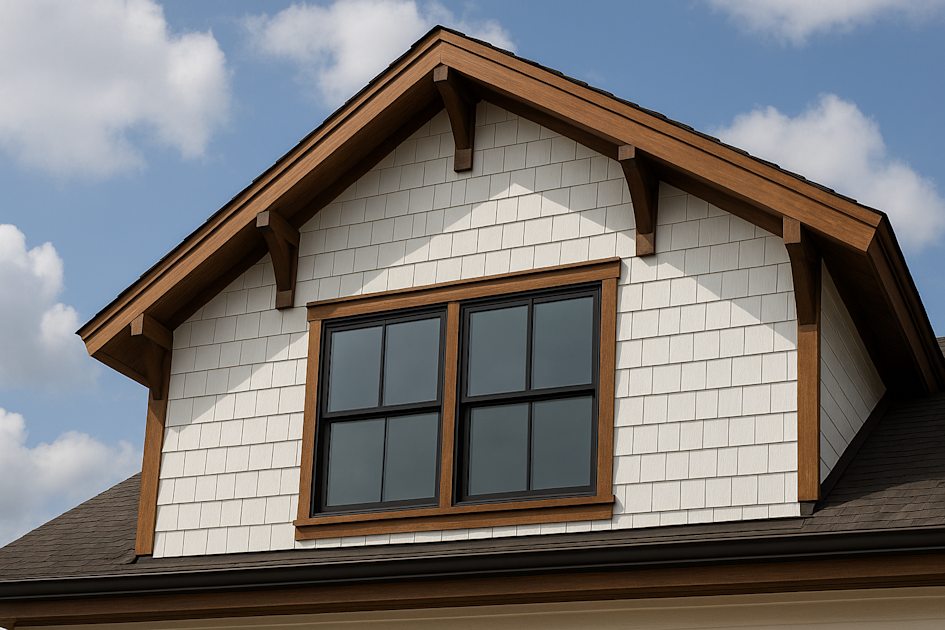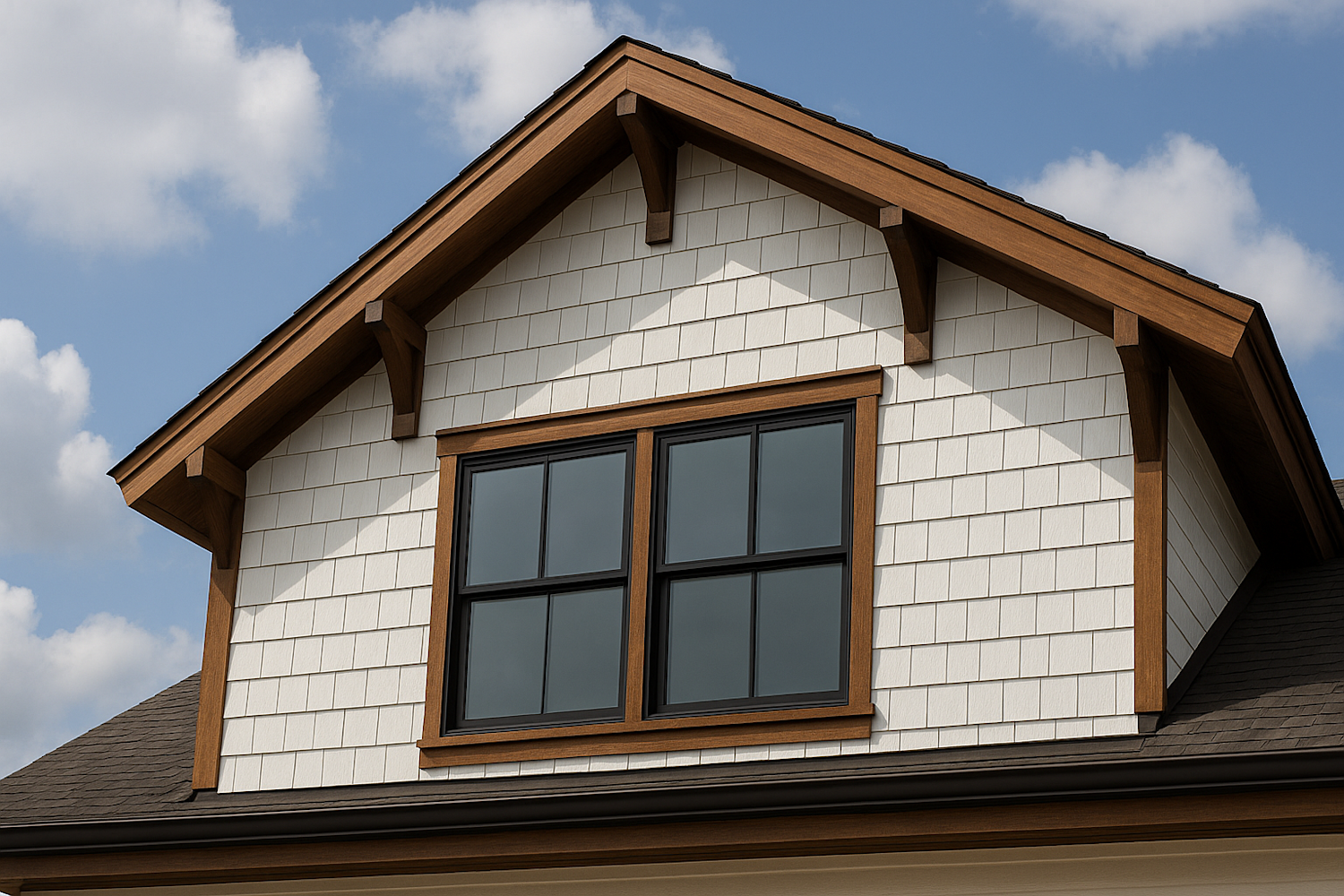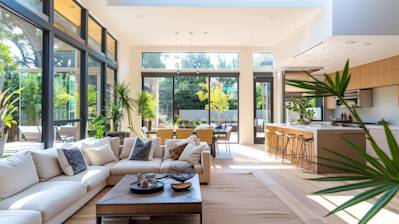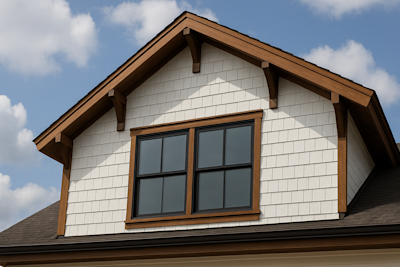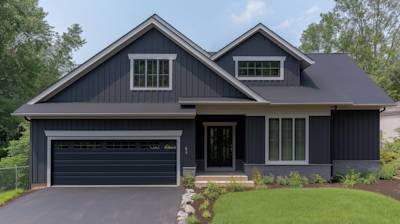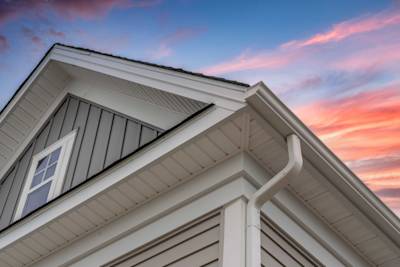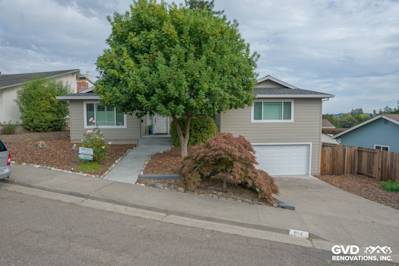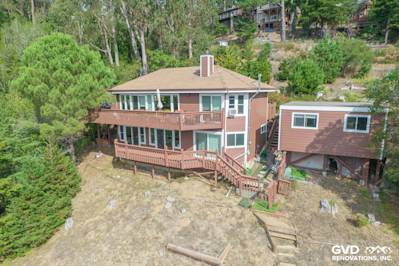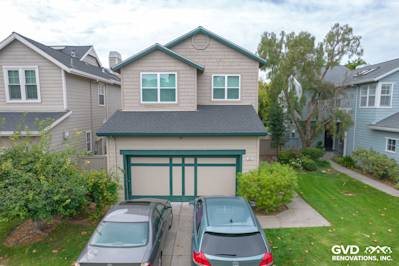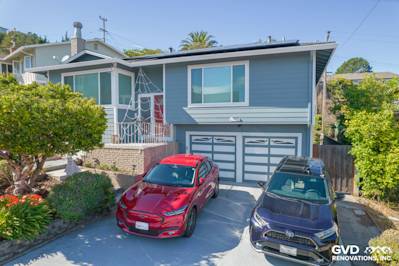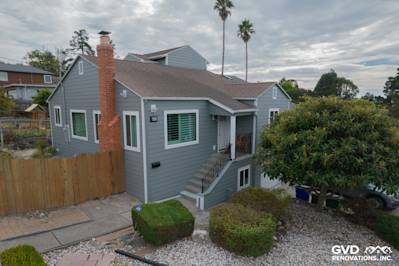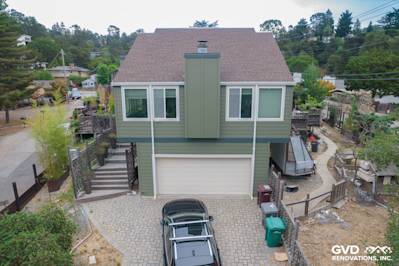Whether you're building a new house, upgrading existing siding, or repairing some damaged portions, you need a reliable, appealing, and cost-effective siding solution. That's where vinyl shingle siding comes to the rescue. Vinyl shingle siding combines the charming aesthetics of shingles with the durability and low maintenance nature associated with vinyl. Read on to delve deeper into this alluring home siding option.
Unveiling Vinyl Shingle Siding
Let's start by understanding what exactly vinyl shingle siding is. As the name implies, this siding is composed of vinyl, a resilient, robust synthetic material that's resistant to moisture and decay. The shingles imitate the look of traditional shingles but without the high costs, maintenance, or potential for damage.
Characteristics of Vinyl Shingle Siding
Not all sidings are created equal. So, let’s examine some of the defining characteristics of vinyl shingle siding:
Appearance: Vinyl shingle siding mimics the authentic, rugged texture of traditional wood shakes and shingles. You can even choose among various colors and styles to match your home’s design.
Durability: This siding fights off Mother Nature's attempts to degrade it, offering excellent resistance to wind, moisture and insect damage.
Maintenance: Vinyl shingle siding is essentially maintenance-free, requiring only occasional cleaning with mild soap and water.
Cost: Compared to other siding materials like wood and brick, vinyl is relatively inexpensive both in terms of material and installation cost.
Vinyl Shingle Siding: A Closer Look at the Installation Process
To truly appreciate this versatile home exterior solution, it's crucial to understand its installation process. Correctly installing vinyl shingle siding can significantly impact the product’s lifespan, functionality, and overall aesthetics.
Step-by-Step Guide to Vinyl Shingle Siding Installation
Preparing the Surface: Proper siding installation starts with a clean, smooth and moisture-resistant surface. The installation begins with the application of a water-resistant barrier over the wall sheathing.
Applying the Starter Strip: Installer will apply a starter strip along the base of the wall to provide a baseline for the first course of siding.
Installing the Siding: The siding shingles are then nailed onto the wall in a staggered pattern starting from the base, working the way up to the top.
Fitting Trim Pieces: Around doorframes, windows, corners, and rooflines, the installer will fit trim pieces to give the siding a finished look.
Styles and Color Options
Vinyl shingle siding is available in a variety of styles that replicate the aesthetic of various wood types, including cedar and redwood. Additionally, you can pick from a plethora of colors ranging from standard white to bold, vibrant hues.
Choosing the Right Style and Color for your Home
It's crucial to choose a style and color that complements your home's architecture. Here are some factors to consider:
Architectural Style: Certain siding styles are more suited to specific architectural styles. For example, a rough-hewn shingle style could be perfect for a rustic, traditional home, while a smooth style might compliment a modern design better.
Environment: Look towards the landscape surrounding your home. Earthy tones might blend well with a rural setting, while bold, cool colors could be striking in urban environments.
Lighting: Darker hues might make a large house seem smaller and more inviting, while lighter shades could make a small house appear larger.
The Longevity of Vinyl Shingle Siding
One of the most significant benefits of vinyl shingle siding is its longevity. With proper installation and minimal maintenance, this siding can last for decades. Various factors affect the lifespan of vinyl siding including the quality of the product, the region’s climate and the home’s exposure to sunlight. High-quality vinyl shingle siding typically comes with a manufacturer's warranty of up to 40 years, symbolizing the manufacturer’s confidence in the product.

Frequently Asked Questions about Vinyl Shingle Siding
Does Vinyl Shingle Siding require a lot of maintenance?
One of the major perks of vinyl shingle siding is its low-maintenance nature. It doesn't require a regular painting or staining like wood siding schemes. You can maintain its appearance over the years with an occasional power washing. This keeps the surface clean and free from dirt, grime, and algae.
How long can I expect Vinyl Shingle Siding to last?
Vinyl Shingle Siding has a long lifespan compared to other siding materials. With regular cleaning and minimal maintenance, it can last up to 60 years. However, this depends on the quality of the product, the professionalism of installation, as well as weather impacts, and maintenance.
Does Vinyl Shingle Siding provide any insulation?
Vinyl Shingle Siding, in its regular form, doesn't offer significant insulation. However, there are insulated varieties available. These have a foam insulation layer affixed to the back of the siding shingles, which can help reduce heat loss in winter and keep your home cool in the summer.
Can Vinyl Shingle Siding be painted?
Yes, you can paint your vinyl shingle siding, but it’s generally not recommended. Vinyl is designed to retain its color throughout its lifespan. If you decide to paint it, you might have trouble finding a paint that adheres to the vinyl surface properly. It also requires a lot of maintenance, as the paint may chip or peel with time.
Is Vinyl Shingle Siding eco-friendly?
The eco-friendliness of vinyl shingle siding can depend on several factors such as the manufacturing process and disposal after its lifespan. While producing vinyl does have some negative environmental impacts, its long lifespan, low maintenance, and recyclability make it a reasonable choice. Furthermore, the use of insulated vinyl shingle siding can reduce energy consumption in homes thanks to its superior insulating properties.
How does Vinyl Shingle Siding compare to other types of siding?
Compared to other types of siding like wood or aluminum, vinyl is often more affordable, both in terms of the product and installation. It’s also easier to maintain as it doesn't need paint or stain, and is resistant to pests and moisture. However, it may not offer the same natural look and feel that wood does, and it doesn’t have the high-end appeal of some other types of siding like brick or stone.
What are the color options for Vinyl Shingle Siding?
Vinyl Shingle Siding comes in a wide range of colors, from traditional shades such as white, beige, and blue to bolder options like red, yellow, and green. Many manufacturers also offer multi-tone options and wood-toned varieties if you prefer a more natural look. It’s important to remember though that once you choose a color, it’s usually permanent since vinyl shingle siding is not ideally suited for painting.
Can I install Vinyl Shingle Siding myself?
While some homeowners do opt for DIY installation of vinyl shingle siding, it’s generally recommended to hire professionals. A poor installation can lead to problems down the line, like water damage, loose shingles, or a shorter lifespan for the siding. Professional installers have the right tools and experience to ensure it’s done correctly.
Pros of Vinyl Shingle Siding
Appearance and Design Flexibility
Versatility
Vinyl shingle siding is available in a wide range of colors, styles, and textures. This means you can match or enhance virtually any architectural style, from classic colonial to modern ranch.
Curb Appeal
Few siding materials can match the beautiful appearance of vinyl shingle siding. It replicates the look of cedar shake, providing an attractive, timeless look that enhances the curb appeal of any home.
Color Retention
Vinyl siding is colored all the way through, meaning it will not show scratches or other damage in the same way painted or stained products might.
Durability and Maintenance
Resilience
Vinyl shingle siding is designed to withstand the elements, including heavy wind and impact from hail, making it one of the most durable choices.
Low Maintenance
Vinyl siding requires minimal maintenance. Unlike wood, it never needs to be painted or stained. Simply occasional washing will keep it looking new.
Pest Resistance
Unlike wood, vinyl is not susceptible to termite damage or other types of wood-boring insects.
Energy Efficiency
Insulation
Vinyl shingle siding typically comes with an insulation backing, offering extra protection to your home against heat and cold. This can result in substantial energy savings over time.
Cons of Vinyl Shingle Siding
Cost
Initial Investment
Vinyl shingle siding can be more expensive than other types of siding, such as traditional vinyl or aluminum.
Durability Concerns
Damage Repair
Although vinyl shingle siding is durable, it can be damaged by severe weather or impact. Due to the configuration of the shingles, if damage does occur, it might necessitate replacing an entire section rather than just one or two pieces.
Color Fading
Despite its color retention benefits, vinyl can fade over time, particularly in darker colors. This can lead to the need for replacement if you want to maintain a vibrant color.
Environmental Impact
Non-Biodegradable
Vinyl is not a biodegradable material, so it contributes to landfill waste unless it is recycled.
Production Process
The production process of vinyl siding involves the release of harmful chemicals into the atmosphere, contributing to environmental pollution.
Installation
Professional Requirement
Vinyl shingle siding requires professional installation. Improper installation could result in buckling, warping, or other problems, meaning do-it-yourselfers might find other siding materials easier to work with.
Just like with any other home improvement project, be sure to weigh the pros and cons to determine if vinyl shingle siding is the right choice for your home. It's important to consider factors such as budget, maintenance, durability, and aesthetic appeal, plus you should also think about your home's architecture and your local climate when making your decision.
Myths and Misconceptions about Vinyl Shingle Siding
Contrary to popular belief, there is a plethora of misinformation surrounding the topic of vinyl shingle siding. From concerns about overall durability to misconceptions about its aesthetic appeal, it's essential to debunk these myths to present a clear and accurate understanding of vinyl shingle siding.
Myth No.1: Vinyl Shingle Siding is Not Durable
One common myth circling vinyl shingle siding is that it's not a long-lasting material. This claim can be instantly debunked. High-quality vinyl siding is, in fact, very durable and resistant to common environmental conditions. Vinyl is specially designed to withstand small impacts, harsh weather conditions including high heat, freezing cold, and high winds, with little to no damage.
It's true that vinyl could crack or break upon severe impact; however, individual shingles are easily replaced without needing to disturb the entire siding, making it a cost-effective and efficient solution to maintain.
Myth No.2: Vinyl Shingle Siding is Attractive to Pests
Another myth about vinyl shingle siding is that it attracts pests and can lead to infestations. While it's true that pests like termites can cause extensive damage to wood siding, they are not attracted to vinyl. Vinyl shingle siding is significantly more resistant to insect and pest infestations compared to other siding materials, making it a suitable choice for homeowners in areas prone to such issues.
Myth No.3: Vinyl Shingle Siding is High-Maintenance
A common misconception about vinyl shingle siding is that it requires high maintenance. In reality, one of the main advantages of choosing vinyl for your home's siding is its low maintenance needs. Vinyl does not need painting or staining like wood or other materials, and it will not rust or corrode over time. Simply washing the siding with a mild soap solution can help maintain its appearance and longevity.
Myth No.4: Vinyl Siding Fades Under the Sun
Some believe that exposure to sunlight will cause vinyl shingle siding to fade over time. While all materials do fade over prolonged periods of sun exposure, vinyl is made with a color blended throughout the material, reducing the visibility of any potential fading. Many manufacturers also offer UV resistant options that can further minimize fading.
Myth No.5: Vinyl Shingle Siding is Not Environmentally Friendly
The production of vinyl shingle siding has often been targeted as not eco-friendly. While it true that the manufacturing process for vinyl can have an environmental impact, it's important to note that vinyl shingle siding is 100% recyclable. Furthermore, its long lifespan and low maintenance requirements mean that it needs to be replaced much less frequently than other materials, reducing its overall impact on the environment.
Myth No.6: Vinyl Shingle Siding Looks Cheap
Some people believe that vinyl shingle siding doesn’t have the aesthetic appeal that comes with other siding materials like wood. However, technological advancements have made it possible to make vinyl shingle siding that looks and feels almost identical to more "classic" materials. These replicas can capture the charm and elegance of traditional wood without any of the maintenance or durability issues that wood siding risks.
Myth No.7: Vinyl Shingle Siding is Poorly Insulated
One myth about vinyl shingle siding is that it doesn't provide adequate insulation. However, many types of vinyl siding, especially those with an insulation backing, can improve a home's energy efficiency. It can enhance the house's thermal envelope, reducing energy costs.
In conclusion, several common myths about vinyl shingle siding are outdated or outright incorrect. The truth is that high-quality vinyl shingle siding is a durable, low maintenance, and environmentally conscious choice that can provide excellent protection and aesthetic value to your home.
Summary
To wrap things up on vinyl shingle siding, let's restate one of their prime features - ease of maintenance. With this type of siding, you can let go of any sense of dread about maintenance chores. It's resistant to harsh weather, doesn't warp or rot and never needs painting – a simple wash annually is all that's needed.
Talking about versatility and appeal, vinyl shingle siding takes the cake offering a wide variety of colors and patterns to choose from. It mimics the classic beauty of traditional cedar shingle siding while being lighter on the wallet. Be it a rustic cottage feel or a modernized look, vinyl shingles are all about customizing to your taste.
Lastly, but not exhaustively, let's highlight the cost-efficiency of vinyl shingle siding. It costs significantly less than wood or fiber-cement siding and even less to maintain. When you factor in their durability, these savings extend over many years. Vinyl shingle siding is a win-win, beautifully mirroring the charm of high-end materials, while actually being a cost-effective, low-maintenance choice.
About Bay Area Siding Company
Bay Area Siding Company is your trusted and local option in Bay Area, CA for all things siding. With our unparalleled knowledge, we ensure to provide our respected clients with top-notch service. We specialize in numerous types of siding, including vinyl, fiber cement, and wood. Our expert team believes in quality workmanship, attention to detail, and speedy service, and we pride ourselves on our commitment to customer satisfaction every step of the way. We're not just in the business of installing siding – we're in the business of creating a warm, secure, and beautiful home for you.
The information provided here is intended for general reference and should not be considered professional advice. Before starting any project, consult a licensed contractor. Product features, specifications, and warranties may have been updated since this was published. Any mention of brands or products reflects personal opinion and does not constitute an endorsement or warranty.

